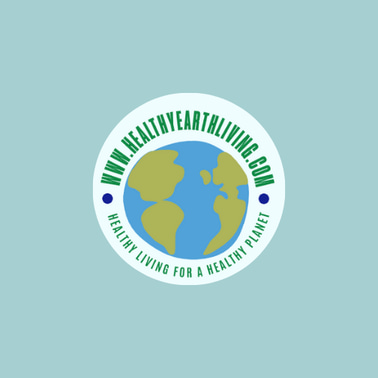7 Natural Ways to Manage Migraine Aura Symptoms
Hania Afsar MSc, biotechnology
8/7/20248 min read


Are you aware of the sudden flashing lights, blind spots, nausea, and throbbing pain signaling the onset of migraine?
A migraine aura is not merely a headache but a dreadful health condition that hits you at the most uncertain time.
Studies reveal that approximately 51.2 % of migraineurs experience migraine with aura. (1) People who suffer from migraine auras know how it disrupts their day-to-day life by impairing their ability to function and putting strain on their mental health.
The common treatment option to get relief from migraine is prescription medicine. However, there are some natural ways to manage migraine aura symptoms and prevent you from experiencing it again.
What is a Migraine Aura?
A migraine aura is a sensory disturbance that can occur before or during a migraine attack. About 25-30% of people with migraines experience one, and it typically lasts between 5 and 60 minutes. (2) Migraine auras are usually visual, but they can also affect other senses and functions.
Here are some common ones:
Visual: Seeing flashing lights, zigzag lines, or blind spots.
Sensory: Feeling tingling or numbness in your arms or legs.
Hearing: Sometimes people hear strange noises or sounds.
Other Senses: Rarely, people might taste something weird or smell something unusual.
Causes and Triggers of Migraine Aura
The exact cause of migraine auras is not fully understood. Scientists think it might have something to do with unusual electrical activity in your brain, like a short circuit. However, some common factors that can trigger auras include:
Stress: Emotional stress or anxiety.
Dietary Factors: Certain foods, such as chocolate, aged cheese, and caffeine.
Hormonal Changes: Especially in women, hormonal fluctuations can trigger auras.
Environmental Stimuli: Bright lights, loud sounds, or strong smells.
Genetic Predisposition
Your genetics plays a significant role in the likelihood of experiencing migraine auras. If migraines run in your family, you may be more prone to developing them yourself. Our system contains specific genes associated with the brain's electrical activity that can make some people more susceptible to the aura phase of migraines.
Neurological Factors
Migraine auras are primarily linked to neurological factors involving complex processes within the brain. Here are some key aspects:
Cortical Spreading Depression (CSD) is a wave of electrical activity that spreads across the brain's cortex. It temporarily disrupts normal brain function and is thought to cause the visual and sensory disturbances experienced during a migraine aura. (3)
Brain Chemistry: Imbalances in neurotransmitters, such as serotonin, play a significant role in developing migraines and their auras. Changes in serotonin levels can affect blood vessels in the brain, leading to the onset of migraine symptoms. (4)
Electrical Activity: Abnormal electrical activity in the brain can trigger auras. This activity can cause temporary disruptions in vision, sensation, and even motor function. (5).


Natural Remedies for Managing Migraine Aura
While there is no exact cure for migraine auras, some natural alternatives work wonders to reduce their frequency and provide relief from excruciating pain during those moments. Let`s explore some of them below.
Diet and Nutrition
A balanced diet rich in essential nutrients like vitamins, minerals, and fats is vital in managing migraine aura symptoms. For instance, lower levels of magnesium oxides in your body can be the most common cause of migraine auras and menstrual migraine. (6) Hence, incorporating magnesium-rich foods into your diet can help relax your muscles and blood vessels, which can help prevent frequent aura attacks.
Some excellent natural sources of magnesium are:
Leafy Greens: Spinach, kale, and Swiss chard are packed with magnesium and offer a range of other essential nutrients.
Nuts and Seeds: Almonds, cashews, and pumpkin seeds are great snack options that provide a healthy dose of magnesium.
Whole Grains: Foods like brown rice, quinoa, and oats can increase your daily magnesium intake.
Some foods can be a real troublemaker for migraine sufferers and should be avoided at all costs.
Processed Foods: Foods with high proportions of preservatives, additives, and artificial sweeteners can often trigger migraines.
Caffeine: While small amounts of caffeine can sometimes help alleviate migraine symptoms, excessive consumption or sudden withdrawal can trigger migraines.
Alcohol: Beverages like red wine and beer are common triggers due to their histamine and tyramine content.
Aged Cheeses: These contain tyramine, known to provoke migraines in some individuals.
Herbal Remedies
Some plants have been used for centuries to soothe various ailments, including headaches and migraines. These include: (7)
Feverfew
Feverfew contains migraine-relieving properties. It reduces inflammation and inhibits the release of serotonin, a chemical involved in triggering migraine auras.
Dosage: Feverfew is available in various forms, including dried leaves, capsules, and liquid extracts. The typical dosage is 100-150 mg daily of a standardized extract containing 0.2-0.4% parthenolide, the active compound. For dried leaves, consuming one to two per day is common, but it's important to follow the specific product guidelines and consult a healthcare provider.
Butterbur
Butterbur is another plant that has gained attention for its potential to help with migraines.
It's thought to work by relaxing blood vessels in the head. However, it's important to choose a purified butterbur extract free from pyrrolizidine alkaloids (PAs), as these can harm the liver.
Dosage: Butterbur is usually taken as a capsule or tablet, and it’s essential to use a product labeled as "PA-free" to ensure it doesn't contain harmful pyrrolizidine alkaloids.
The recommended dosage is 50-75 mg of standardized butterbur extract taken twice daily. Some studies suggest starting with a higher dose initially and then reducing it once migraines are under control.
When considering herbal remedies, it’s important to consult with a healthcare professional, especially if you take other medications or have underlying health conditions.


Lifestyle Adjustments
Small changes in your daily lifestyle can also make a big difference in treating migraine aura symptoms. Triggers like stress and anxiety are real threats to those who suffer from migraine auras. Research shows that stress is a trigger in 70% of individuals who experience migraine attacks. (8) Fortunately, you can treat emotional and psychological stressors with the help of the following techniques.
Yoga
Yoga combines physical postures, breathing exercises, and meditation to reduce stress and promote relaxation. It can improve flexibility, strengthen muscles, and enhance overall well-being.
Meditation
Meditation helps calm the mind, reduce stress, and promote inner peace. Regular meditation can lower stress hormones, improve focus, and enhance emotional resilience.
Establishing a Regular Sleep Schedule
Irregular sleep patterns can trigger migraine auras and exacerbate symptoms. Therefore, it`s important to keep your sleep cycle in check and aim for a consistent sleep schedule. Going to bed and waking up at the same time daily helps regulate your body's internal clock, making it easier to fall asleep and wake up naturally.
Create a relaxing bedtime routine that signals to your body that it's time to wind down. This could include reading, taking a warm bath, or listening to calming music.
Also, avoid electronic devices at least an hour before bedtime, as the blue light emitted by screens can interfere with your ability to fall asleep.
Acupuncture and Acupressure
Acupuncture is a traditional Chinese medicine practice in which needles are poked into special spots on the body. The process has varied applications among other therapies to provide relief from migraines without any harsh side effects. (9)
It helps lower stress levels, a common trigger for migraines, by promoting relaxation and reducing anxiety. Also, the release of endorphins suppresses the intensity of migraine pain.
Similarly, acupressure is a practice that involves applying pressure to specific points on the body with the help of fingers. It can be an effective self-help technique for managing migraines. Here are some key pressure points for acupressure that can help alleviate migraine symptoms:
LI4 (Hegu):
Location: The webbing between your thumb and index finger.
Benefits: LI4 relieves headache pain and improves overall energy flow.
GB20 (Fengchi):
Location: At the base of the skull, in the hollows on either side of the spine.
Benefits: GB20 can help relieve headaches and neck pain while improving circulation to the brain.
Yintang:
Location: Between the eyebrows, in the center of the forehead.
Benefits: Yintang is effective in relieving frontal headaches and promoting relaxation.
ST36 (Zusanli):
Location: Four finger widths below the kneecap, on the outer side of the shinbone.
Benefits: ST36 is known for boosting energy and relieving pain, including headaches.
Taiyang:
Location: In the temples, the hollow between the outer corner of the eye and the hairline.
Benefits: Taiyang effectively relieves tension, headaches, and migraine pain.


Alternative Therapies and Techniques
While traditional medicines are common to treat migraine pain and reduce the frequency of attacks, some alternative therapies offer a holistic approach to migraine management. Besides managing the symptoms, these therapies target the root cause of the disease for overall well-being. (10)
BioFeedback
Biofeedback is a mind-body technique that helps you learn how to control physiological processes such as heart rate, muscle activity, and blood pressure through sensors.
As migraines are often linked to stress, biofeedback helps you learn to relax your muscles and slow down your heart rate, which can reduce stress levels. Hence, less stress might mean fewer migraine triggers.
Also, by monitoring your body's responses, you might discover patterns leading to a migraine aura. Once you know these patterns, you can try techniques to prevent them.
Essential Oils
Certain essential oils, such as lavender, eucalyptus, and peppermint, possess analgesic and anti-inflammatory properties. These can help reduce the intensity of migraine pain while improving your mode and physical state. You can inhale them directly, add them to a diffuser, or dilute them in a carrier oil for topical application.


Prevention and Long-Term Management Strategies
Understanding your migraines is the first step to managing them. Therefore, keeping a migraine diary can help uncover clues to your personal migraine puzzle. (11)
But here arises a question. What should I track and write to keep migraine auras in check? Below is how you go about it.
Triggers: Note everything from food and drinks to stress levels and weather changes.
Symptoms: Record the type of aura, headache intensity, and other accompanying symptoms.
Timing: Track when your migraines occur, how long they last, and if there's a pattern.
Once you've gathered data for a few weeks, look for recurring patterns. Are there certain foods or activities that consistently trigger your migraines? Armed with this information, you can start making changes to avoid those triggers and reduce the frequency of your migraines.
Remember, every migraine sufferer is unique. What works for one person might not work for another. A migraine diary is a personalized tool to help you find what works best for you.
Regular Exercise
Exercise is often seen as a miracle cure for many ailments, and migraines are no exception. Physical activity helps reduce stress, improve sleep, and boost mood—all of which can contribute to fewer migraine headaches. Regular exercise also improves blood flow, reducing the likelihood of vascular changes that can trigger migraines. (12)
Exercises Suitable for Migraine Sufferers
Walking is a simple, low-impact exercise that can be easily incorporated into daily routines. Aim for at least 30 minutes of brisk walking on most days of the week.
Swimming provides a full-body workout without stressing the joints. The buoyancy of the water can be soothing and help reduce muscle tension.
Cycling or riding a stationary bike or cycling outdoors can provide a good cardiovascular workout without a high impact on the joints.
Pilates focuses on core strength, flexibility, and mindful movement. It helps reduce tension and improve posture, which can be beneficial in preventing migraines.


Bottom Line
All in all, these natural remedies work like magic in kicking off migraine aura symptoms while providing effective relief to the sufferers. While these approaches can benefit many, they may not work for everyone. So, consulting a healthcare professional for a personalized treatment plan is essential.
If you enjoyed this article, please subscribe to my weekly newsletter and be the first to receive my latest articles and new recipes!
















© 2025 Salo Content Writing LLC, all rights reserved
Join the Movement for a Healthier Planet! 🌿
Subscribe now and get your FREE Sustainable Living Checklist! Plus, enjoy weekly articles and delicious plant-based recipes straight to your inbox. Let’s make sustainable living simple and inspiring, one email at a time! 💚✨
